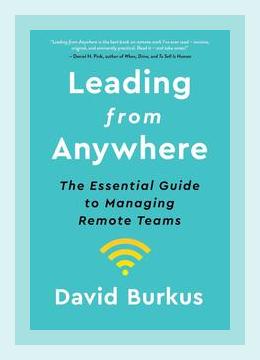Finance and AccountingAuditing
Title: Remote Auditing: Conduct a Successful Audit from Anywhere
Author: John E. Joseph
Year: 2021
Category: Auditing
1. Introduction to Remote Auditing
– Key Point: The Shift to Virtual Audits
– Summary: John E. Joseph opens with the reality that remote auditing has shifted from an occasional practice to a necessity due to advances in technology and global events such as the COVID-19 pandemic.
– Action: Dedicate time to understanding the fundamental principles of virtual communication tools and cybersecurity measures to safeguard audit integrity.
– Example: The book describes a company transitioning to remote audits using video conferencing tools like Zoom and Microsoft Teams when travel restrictions were imposed due to the pandemic.
2. Preparing for a Remote Audit
– Key Point: Pre-Audit Planning
– Summary: Preparation is crucial for a successful remote audit. This includes defining the scope, understanding client operations, determining audit criteria, and establishing communication protocols.
– Action: Develop a detailed audit plan which includes a checklist of required documents and access permissions to digital systems.
– Example: Joseph explains a scenario where an audit team used a shared cloud storage solution to collect pre-audit documentation, ensuring all necessary paperwork was reviewed before the actual audit dates.
3. Effective Use of Technology
– Key Point: Leveraging Digital Tools
– Summary: The right technology is central to remote audits. These tools include encrypted email, virtual data rooms, secure file sharing services, and audit management software.
– Action: Invest in reliable and secure technology that supports document sharing, electronic signing, and virtual communication.
– Example: A case highlighted in the book involves an audit team using a secure portal like Citrix ShareFile to manage and exchange sensitive data securely.
4. Communication Strategies
– Key Point: Maintaining Clear Communications
– Summary: Clear and consistent communication is critical to overcoming the barriers of not being physically present. Virtual meetings need to be frequent and well-structured.
– Action: Schedule regular check-ins and use collaborative platforms that offer both synchronous and asynchronous communication options.
– Example: Joseph narrates how daily virtual stand-up meetings using Microsoft Teams helped auditors maintain continuous dialogue and streamline their workflow.
5. Conducting the Remote Audit
– Key Point: Real-Time Data Access
– Summary: Access to real-time data and documents is imperative. This includes having the ability to observe the processes remotely, through live video feeds or screen-sharing sessions.
– Action: Set up systems that provide auditors with real-time access to documents and the ability to interview staff via video calls.
– Example: An instance from the book depicts auditors conducting inventory verification through live video feeds via mobile devices, observing the physical inventory remotely.
6. Challenging Audits and Mitigating Risks
– Key Point: Identifying and Addressing Risks
– Summary: Remote audits come with their own set of challenges and risks, such as cybersecurity threats, data integrity issues, and limited physical observation.
– Action: Conduct a risk assessment specific to remote auditing and implement appropriate controls.
– Example: Joseph discusses a pharmaceutical company that increased its cybersecurity measures to protect sensitive intellectual property during a remote audit by updating firewalls and using multi-factor authentication.
7. Enhancing Auditor Skills
– Key Point: Training and Development
– Summary: Auditors need to develop new skills to effectively conduct remote audits, such as proficiency in digital tools, understanding remote client environments, and improving virtual communication skills.
– Action: Enroll in continuous professional development courses focusing on remote auditing techniques and technologies.
– Example: The narrative includes a story about a firm organizing workshops to train auditors on using their new audit management software and conducting effective virtual meetings.
8. Legal and Ethical Considerations
– Key Point: Compliance with Legal and Ethical Standards
– Summary: Remote auditing must comply with relevant legal and ethical guidelines, including data privacy laws and professional standards.
– Action: Stay informed about the legal requirements and ethical standards applicable to remote auditing practices in different jurisdictions.
– Example: Joseph mentions a multinational corporation ensuring their remote audit practices adhere to GDPR requirements by implementing data anonymization and encryption protocols.
9. Post-Audit Activities
– Key Point: Reporting and Follow-Up
– Summary: Once the audit is complete, it’s important to compile comprehensive reports and follow up on the implementation of audit recommendations.
– Action: Use audit management software to compile and distribute findings, and schedule follow-up meetings to discuss compliance with recommendations.
– Example: A firm used a project management tool to track post-audit action items and deadlines, ensuring accountability and timely resolution of audit findings.
10. Continuous Improvement of Remote Auditing Processes
– Key Point: Reflective Practices
– Summary: Regularly review and refine remote auditing processes to adapt to new technologies, methodologies, and client requirements.
– Action: Conduct post-audit reviews with the audit team to identify learning points and areas for process improvement.
– Example: The book illustrates a scenario where post-audit debriefs highlighted the need for better document management systems, leading to the adoption of an integrated audit management platform.
11. Case Studies and Real-World Applications
– Key Point: Learning from Experience
– Summary: Joseph provides a range of case studies that show how different organizations successfully transitioned to remote auditing, emphasizing practical solutions and lessons learned.
– Action: Analyze case studies to identify best practices that can be tailored to suit your organization’s specific needs.
– Example: One case study details a financial services firm that conducted comprehensive remote audits during lockdowns by developing a structured approach to virtual client interactions and leveraging AI for data analysis.
By following the guidance outlined in John E. Joseph’s “Remote Auditing: Conduct a Successful Audit from Anywhere,” auditors can effectively transition to remote practices while maintaining audit quality, ensuring compliance, and safeguarding data security. This book serves as an invaluable resource for auditors navigating the evolving landscape of remote auditing, offering actionable insights, real-world examples, and essential strategies for success.
